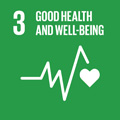- Docente: Ivan Favarin
- Credits: 2
- SSD: MED/45
- Language: Italian
- Teaching Mode: In-person learning (entirely or partially)
- Campus: Bologna
- Corso: First cycle degree programme (L) in Neurophysiopathology techniques (cod. 8482)
Learning outcomes
At the end of the module the student will be able to ascertain vital signs, blood pressure values and oximetry and to perform first aid maneuvers. The student will learn the fundamentals of BLSD for patients in cardiopulmonary arrest.
Course contents
Healthcare demand and Nursing:
- The main theories of nursing
- Notes on the role of nurses in healthcare organizations
- Interprofessional collaboration: regulations and ethics
Risk of infections:
- Healthcare-associated infections: definitions and strategies for prevention
- Personal protection equipment: which and when, according to the most common communicable diseases in hospital settings
- Elements of hygiene: sanitation, disinfection, antisepsis and sterilization of healthcare devices in use.
Safety:
- Mobilization of the person
- Restraint and risk of falls
- The management of people with prosthetics and orthoses
- Patient's devices and aids
Settings and devices:
- The emergency crash-cart
- First Aid and Emergency Room
- The operating room
- Intensive care units
Urgency and emergency in healthcare settings:
- In-hospital emergency response systems
- Patient's assessment: Head-to-toe approach (ABCDE: Airways, Breathing, Circulation, Disabilities, Exposure)
- Vital Signs and symptoms (Respiratory Rate, Oximetry, Heart Rate, Blood Pressure, Glasgow Coma Scale, Pain).
Resuscitation:
- BLS-D (Basic Life Support and Defibrillation) according to Italian Resuscitation Council.
- BLS for pediatric patients and clearing airways from obstructing foreign objects in children and infants.
Readings/Bibliography
Necessary: Handouts provided during the lessons, along with instructions and reference papers and guidelines. Files are available on 'Virtuale - virtual learning environment', the teaching support platform of University of Bologna, accessible to university students only.
For further reading (optional):
- Caironi, G., Pinto, F. (2021). Infermieristica in emergenza urgenza. Italia: Idelson-Gnocchi.
-
Fondamenti Di Assistenza Infermieristica - Concetti E Abilità Cliniche Di Base | Barbara K. Timby | McGraw-Hill
- Pintaudi, S. (2010). Il neuroleso grave: Aspetti clinico-assistenziali e organizzativi. Italia: Springer Milan.
For advanced reading (optional):
- Balzanelli, M. G. (2022). Medicina di Emergenza e di Pronto Soccorso. Approccio clinico essenziale: Manuale tascabile. Italia: Edra.
Teaching methods
- Frontal lessons (classroom teaching)
- PBL (problem-based learning)
- Case Method
- Group workshops
- Practical training sessions
Assessment methods
Attendance to lessons is compulsory: a minimum 75% attendance is required for the admission to the exam sessions. For Integrated Courses, the attendance is computed on the overall number of hours of the whole course. Students who do not fulfill the minimum attendance shall not be allowed to take exams and will have to attend lessons again, starting in the following academic year.
Assessment: Joint viva voce exam session with other units from the First Aid integrated course.
For this unit, for each candidate there is:
- a set of 6 questions (concerning theory or short problem solving) one for each lesson, each granting from 0 to 5 points (max. total 30)
- plus 1 extra question on a specific topic to increase the overall mark (or achieve Cum Laude).
The minimum pass for the exam is 18/30.
The evaluation mark for this exam contributes to the overall Integrated Course score, using weighted average (based upon the amount of credits respectively).
The score obtained for each individual module is valid for the current year only.
Students with learning disorders and/or temporary or permanent disabilities: please, contact the office responsible (https://site.unibo.it/studenti-con-disabilita-e-dsa/en/for-students) as soon as possible so that they can propose acceptable adjustments. The request for adaptation must be submitted in advance (15 days before the exam date) to the lecturer, who will assess the appropriateness of the adjustments, taking into account the teaching objectives.
Teaching tools
Screening of presentations and audiovisual support.
Devices and dummies for practical training sessions.
Office hours
See the website of Ivan Favarin
SDGs

This teaching activity contributes to the achievement of the Sustainable Development Goals of the UN 2030 Agenda.
